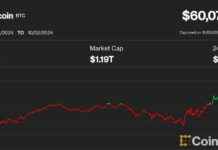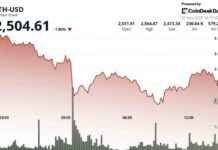Russia’s Ministry of Justice, like, totally drafts this new bill, you know, to classify crypto as property for seizure in criminal cases. The bill, like, allows investigators to confiscate digital assets and block transactions during their probes and stuff. This bill shows Russia’s like, shift toward stricter crypto regulation because they’re all worried about rising cybercrime and stuff.
A New Move to Regulate Crypto Crime
So, like, on May 19, local news sources were all buzzing about how the Russian Ministry of Justice is like, working on this new law. Under this bill, digital assets would be like, considered the same as traditional property and stuff. That means, like, they can totally be taken from you during an investigation into a crime and stuff.
The Ministry of Justice is like, already on it, drafting this bill that treats cryptocurrencies as property and all that jazz. So, their seizure and possible confiscation can happen in criminal situations, you know? But, like, there are still some issues with managing digital assets because they only exist online and stuff. But, like, Russia is totally working on it, and the bill is even going through the Russian parliament’s State Duma for review and debate and stuff. So, yeah, Russia is, like, planning legal tools to confiscate digital assets and all that jazz to, like, streamline the process of seizing crypto in criminal matters.
In Conclusion
So, like, after this law is passed, police and courts will totally have the power to take digital assets during criminal probes and stuff. This, like, shows that Russia is taking a different stance towards cryptocurrencies and all that jazz. They’re, like, really working hard to stop cybercrime and help victims get their lost damages back. There are still some technical obstacles, but Russia is totally on it, working on crypto regulations and stuff. So, yeah, that’s the scoop on Russia’s new bill and their plans to regulate crypto in criminal cases, you know?














